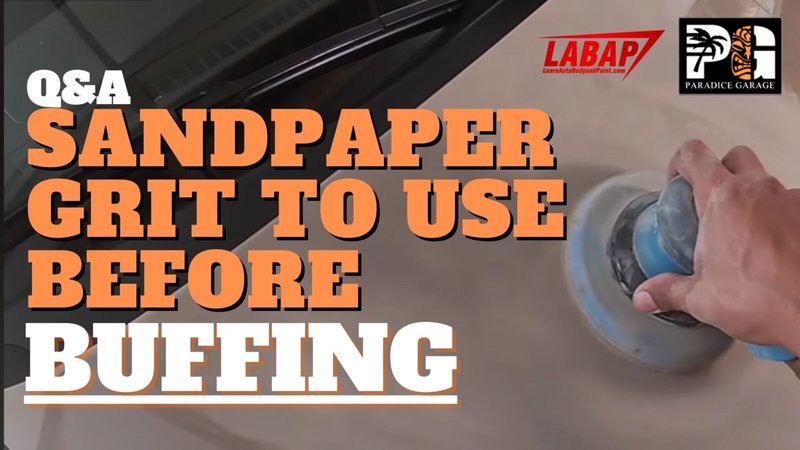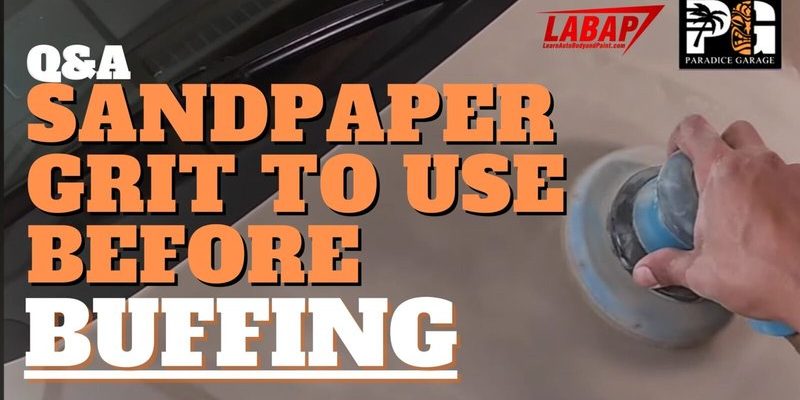
Fine-grit sandpaper (think 800-grit and up) is to scratches what a gentle eraser is to pencil marks. Used with a light touch, it can transform a scuffed, worn piece of hardware back to its shiny, pride-worthy self. That’s true whether you’re sprucing up a weathered brass door handle or smoothing the rough spots on your car’s exterior trim. It works across brands and types—Kwikset, Schlage, or that anonymous fixture you forgot where you bought. Let’s get into exactly how to use it so you don’t make things worse before they get better.
What Is Fine-Grit Sandpaper? (And Why Does Grit Matter for Buffing)
First, let’s break down what fine-grit sandpaper actually means. Sandpaper comes in a rainbow of grit numbers. The “grit” just tells you how rough or smooth the paper’s surface is—the higher the number, the finer, or smoother, the paper. For buffing out scratches on exterior hardware, you’ll want something in the 800 to 2000 grit range.
Why not just grab whatever sandpaper you find in the garage? Well, using a coarse grit (say, 60 or 100) is like trying to smooth your skin with a cheese grater. That might be dramatic, but honestly, coarse paper leaves deeper scratches. Fine-grit sandpaper, on the other hand, acts more like a nail buffer, smoothing out old marks without making new, nasty gouges.
You might be wondering if it matters if the sandpaper is “wet/dry” or regular. For exterior hardware, wet/dry sandpaper is a good call. It gives you the option to use a little water for an even smoother finish, especially with metals or glossy plastics.
When Should You Use Fine-Grit Sandpaper on Exterior Hardware?
Not every scratch or scuff needs the same approach, so let me explain when this technique shines. If you’re dealing with *shallow*, surface-level scratches—ones you can barely catch with your fingernail—fine-grit sandpaper is perfect. For deep gouges or dents, you’ll want to try another repair method or call in a pro.
Here are a few common scenarios where fine-grit sandpaper can work wonders:
- Buffing out nicks on a weathered metal mailbox
- Restoring the shine to tarnished or scratched door knockers
- Smoothing minor scrapes on your car’s chrome trim (just be careful—more on that later!)
- Fixing cloudy spots on exterior light fixture covers
It’s worth noting that fine-grit sandpaper isn’t a magic wand for everything. Different materials—like painted metal versus raw aluminum, or plastic versus brass—can react differently. Always check if your fixture or trim has any coatings (like clear sealant or powder coating) that sandpaper could damage. If you’re not sure, start on a hidden spot to test.
What Supplies Do You Need Before You Start Buffing?
Before you start obsessively rubbing that scratch, it pays to gather a few basic supplies. Trust me, it’s easier to have everything ready rather than hunting down that missing towel or water cup with sandpaper grit all over your hands.
Here’s what you’ll need:
- Fine-grit sandpaper (usually between 800–2000 grit)
- A soft cloth or microfiber towel (for cleaning and drying)
- A small bowl of water (if using wet/dry sandpaper)
- Mild soap
- Optional: rubber gloves for comfort
If you’re working on hardware that can be removed (like a door handle or light fixture), it might be easier to take it off so you can work more comfortably. But if removing the part is complicated, don’t stress—you can buff most scratches in place as long as you’re gentle.
For car trim, definitely read your manual or check the care instructions online. Some makes and models (especially luxury brands) use coatings that don’t play well with abrasion, even from fine-grit sandpaper.
Step-By-Step: How To Buff Out Scratches With Fine-Grit Sandpaper
So you’ve got your supplies—now what? Here’s the step-by-step, from start to shiny finish.
Patience is your best friend here. Rushing with sandpaper, even fine grit, can turn a tiny scratch into a bigger problem if you’re not careful.
- Clean the surface: Dirt can make things worse. Wash the hardware with mild soap and water, then dry thoroughly with your towel.
- Dampen the sandpaper (if it’s wet/dry): Dip the sandpaper in water. This helps catch debris and makes buffing even gentler.
- Buff the scratch gently: Using light, even pressure, move the sandpaper in small circles right over the scratch. Less is more—don’t press down hard.
- Wipe, check, and repeat: Every few passes, wipe away the residue and check your progress. If the scratch is fading, great! If it’s still visible, try a few more light passes. Stop as soon as it looks even—don’t overdo it.
- Polish and finish: When the scratch is gone, buff with a clean, dry towel. If you have a bit of metal polish handy, use it for extra shine (but skip this step for painted or coated finishes).
Take your time and celebrate small wins—you’ll be surprised how quickly a dull, scratched surface starts looking brand new.
Common Mistakes When Using Sandpaper On Hardware (And How To Avoid Them)
Even with the right grit, it’s easy to get a little too excited and make mistakes. Here are a few pitfalls I see all the time, and honestly, I’ve made some of them myself.
- Using too much pressure: It’s tempting to press harder, thinking you’ll fix scratches faster. Don’t! Light, steady pressure is key. Heavy-handed buffing can leave swirl marks or flatten details.
- Skipping the cleaning step: Buffing over dirt grinds grit into the surface, creating more scratches. Always clean first.
- Not checking your work: If you go too long without wiping and checking, you might sand through the finish or create an uneven patch. Pause often.
- Using the wrong grit: Anything under 400 grit is too rough for fine buffing. Stick to 800 or higher for most jobs.
If you’re nervous about messing up, here’s my advice: cut a tiny corner of your sandpaper and try it somewhere out of sight. That way, if something weird happens, nobody will notice but you.
Comparing Fine-Grit Sandpaper to Other Scratch Removal Methods
Let’s talk alternatives, because you might be thinking: “Isn’t there a fancy buffing compound or tool for this?” Fair question! There are other options, depending on your budget, patience, and the specific hardware you’re dealing with.
- Buffing compounds: These work especially well for car paint and chrome. They’re great at removing ultra-fine scratches, but they can be messy and usually need a power tool (like a buffer or drill attachment) for best results.
- Magic erasers or abrasive pads: Some folks use these on door handles or plastic fixtures. They’re fine for really small jobs, but can actually eat through finishes if you’re not careful.
- Touch-up paint or pens: For scratches on coated or painted metal, a matching paint pen is sometimes the safest bet. Sandpaper works best when you want to smooth, not cover, imperfections.
In my experience, fine-grit sandpaper gives you a lot of control (and satisfaction), especially on durable, exposed surfaces that get handled every day. It’s also cheap and easy to find—no need to track down special brand-specific products.
Extra Tips for Success: Going Beyond the Buff
Here’s a little extra wisdom to keep your hardware looking good for the long haul:
- Seal and protect: After buffing, protect the area. For metal, a dab of clear wax or a squirt of silicone spray can help block new scratches and moisture.
- Routine cleaning matters: Wipe down handles, locks, and fixtures often. Dirt and grime are the main culprits behind surface wear.
- Replace when needed: If your hardware is old and deeply damaged, sometimes a replacement (or professional respray) is worth it, especially for brands with good swap options like Kwikset or Schlage.
It’s also smart to check if scratches are a sign of bigger problems—like rust, loose fittings, or fading coatings. Staying on top of little fixes keeps your exterior looking fresh and keeps those “oh, I should really fix that” thoughts at bay.
Why Fine-Grit Sandpaper Is a Handy Fix for Exterior Hardware
Honestly, there’s something satisfying about taking care of small things with your own hands. Buffing out scratches with fine-grit sandpaper isn’t just about appearances—it protects your hardware from bigger issues down the line, like rust or corrosion. Plus, it’s a lot cheaper than replacing everything just because of a few scuffs.
You might be surprised how forgiving most metal and plastic surfaces are. With a gentle hand, a little patience, and a few basic supplies, you can keep your entryway, mailbox, or car trim looking sharp for years. Just remember: always go fine with the grit, light with the touch, and patient with your progress.
If you ever find yourself staring at an annoying scratch, don’t stress. Grab that fine-grit sandpaper, follow the steps, and watch your hardware shine again—sometimes, it really is that simple.
